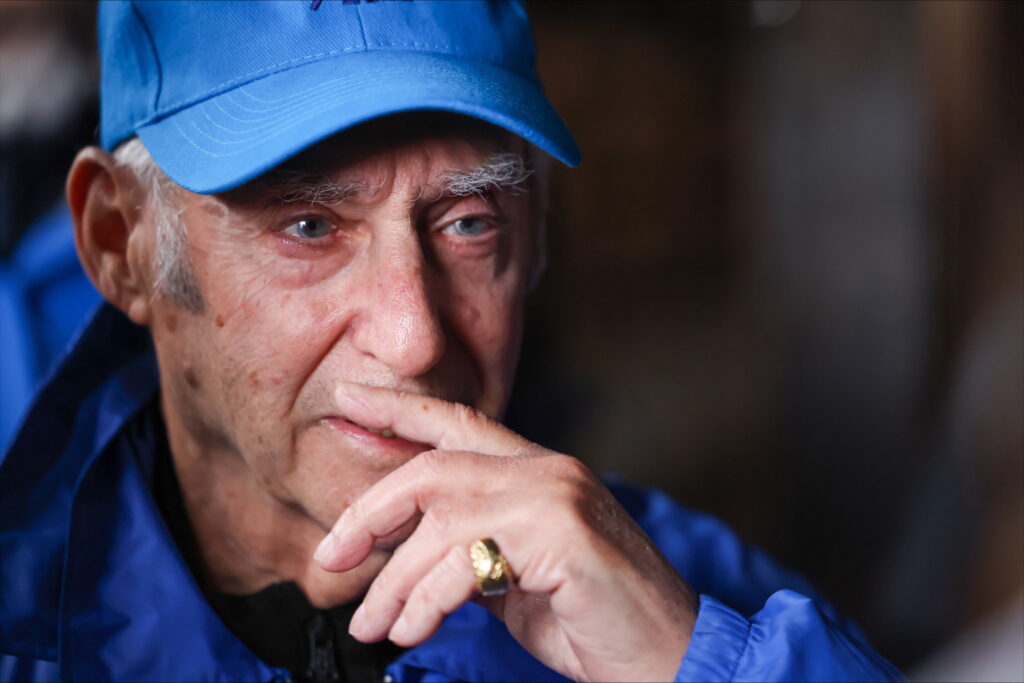Local News
Situation re possible sale of Town Island gets even murkier
 By BERNIE BELLAN
By BERNIE BELLAN
The situation regarding the possible sale of Town Island took a somewhat confusing twist these past two weeks when an online publication known as Kenora Online reported on Monday, January 13, that Kenora-Rainy River MPP Greg Rickford (who is also Ontario’s Northern Development Minister) said “he’s working with the City of Kenora on a possible Town Island land swap.”
However, a careful reading of what Rickford is actually quoted as having said might be interpreted as the exact opposite of what the Kenora Online wrote when it said Rickford is working on a “land swap” with Kenora. Here is what the article actually said:
“Kenora Rainy-River MPP and Northern Development Minister Greg Rickford says he’s working alongside staff with the City of Kenora to create an opportunity for more housing and land developments, and the plans include Kenora’s Town Island.”
“ ‘There’s discussions with the city and the Ministry of Natural Resources and Forestry on the opportunity. Now that we more clearly understand the city’s intentions are with it, I’ve assured the Mayor and Councillors (sic.) that we’re going to move forward and try to create an opportunity for them,’ said the minister.”
When I emailed Adam Smith, the City of Kenora’s Manager of Land Services, to ask him whether he could confirm that there have been negotiations with the Province of Ontario over Town Island, Smith categorically denied that there have been any negotiations with the Province of Ontario over anything to do with a land swap for Town Island.
Here’s what Smith wrote to me on January 17:
“Hi Bernie,
“The City has not had any discussions around a land swap with the Province (emphasis ours). I understand there is an article suggesting otherwise and I would suggest following up with the editor on the content.”
As a result of the possible misinterpretation of what Minister Rickford said to the reporter for Kenora Online, we have attempted to contact Minister Rickford himself to seek a clarification of what it is exactly that the Province of Ontario would like to do re Town Island.
In an email I sent to Minister Richford on January 17, I asked the minister the following:
“A careful reading of what you had to say could lead one to think that the province is interested in helping to ‘develop’ Town Island – which is the opposite of what those hoping for a land swap would want (which would be to see Town Island conserved in its natural state).
“Can you help me to understand just what it is that the province is interested in doing? Also, have there been negotiations with Kenora, but they don’t have anything to do with a land swap?”
In a previous article we noted that the City of Kenora had set January 31, 2020 as the deadline for receiving expressions of interest re Town Island. The clock is ticking. As we noted in our Short takes column of January 8, the Province of Ontario holds the key cards in this situation if it were to propose a land swap with Kenora for Town Island.
But, it is entirely possible that Kenora will want to move ahead with the sale of that part of Town Island which it still owns regardless of the position that the Province of Ontario might take. Thus, it is crucial to understand what Minister Rickford meant when he said that “There’s discussions with the city and the Ministry of Natural Resources and Forestry on the opportunity”.
What opportunity is he referring to? Is it the opportunity to “develop” Town Island, which is what he seems to be saying – and which would be devastating news for the Friends of Town Island and other groups that have rallied in support of halting the sale of Town Island or is it the opportunity to conserve Town Island as a “nature conservancy”, which is what the Friends of Town Island are proposing?
Certainly, ambiguity is what most politicians are very good at delivering when they offer any comments at all – if you can even get a politician to make a public comment. But, in the case of Minister Rickford, it doesn’t seem that he was being deliberately ambiguous. He certainly had something in mind when he said “he’s working alongside staff with the City of Kenora to create an opportunity for more housing and land developments, and the plans include Kenora’s Town Island.”
The problem here is that the reporter for Kenora Online didn’t follow up that remark with this sort of question: “Are you talking about developing Town Island?”
Instead, the reporter – and it would seem whoever was responsible for posting the story online, took Rickford to mean that he was interested in the idea of swapping Town Island, which explains why the headline for the story read: “Province, City working on Town Island land swap”.
Naturally, when I read that headline, my first reaction was: “Whew! Finally, the Province of Ontario is stepping in to help save Town Island from development”, which is something I suggested in our January 8 issue was the desired outcome for this vexing situation.
Thus, when I sent an email to Adam Smith of the City of Kenora, asking him whether he could confirm that there had been discussions with the Ontario provincial government about a land swap for Town Island, I was shocked to read that, not only was there nothing to announce regarding a deal to swap provincially owned land either in or adjacent to Kenora for Town Island – Smith denied there had even been any negotiations on the matter.
But, it took three days for Smith to respond to my query about a land swap. Once I received his response late Friday afternoon, I immediately contacted the reporter for Kenora Online to ask him whether he had recorded anything else Minister Rickford might have said that would have justified going forward with a headline that Ontario and Kenora were working on a land swap for Town Island?
Here’s what the reporter wrote back to me in an email: “That is the direct quote I received from Minister Rickford after speaking with him in person in regards to the Town Island land swap (emphasis ours). I’d encourage you to contact his office for more.”
So, it would seem clear that the reporter for Kenora Online was asking about a land swap when he spoke with Minister Rickford. And, I can well understand the reporter’s interpreting the minister’s response to mean that the Province of Ontario was indeed interested in a land swap, but this wouldn’t be the first time that a reporter might have rushed to judgement without asking a more specific question that would have removed any doubt as to what the minister meant.
Why all this concern about Town Island, you might be wondering? Well, if over 10,000 individuals have taken the time to sign a petition asking the City of Kenora not to sell Town Island, it’s pretty clear that this is an issue that resonates with a great many people.
And, with the clock ticking as we move ever closer to the possibility that Kenora may indeed sell off the rest of Town Island to a private developer (although there is nothing to forestall an organization or individual from coming forward with an offer that would see Town Island safeguarded from private development), it’s awfully important to remove any ambiguity as to what the Province of Ontario is prepared to do to protect Town Island – if anything at all.
I’m just afraid that the Kenora Online might have got it all wrong though – and, rather than wanting to preserve Town Island, the Minister of Northern Development for Ontario actually wants to develop Town Island. After all, his title contains the word “development”, not preservation.
And, given the response that I received from Adam Smith of Kenora in which he said there have not been any negotiations at all with the Province of Ontario over a land swap for Town Island, it doesn’t appear that the Province of Ontario will do anything to stop the sale of Town Island to private developers. Just the opposite seems the most logical interpretation of what Minister Rickford had to say: He wants to “develop” Town Island.
Post script: We have to attempted to reach Minister Rickford several times since this article first appeared in our print edition, including through his government office in Toronto and his constituency office in Rainy River – to clarify just what is the Government of Ontario’s intent with respect to Town Island, but have not heard back from anyone associated with the Ontario government.
This is one case though, where I hope I’m proved absolutely wrong though – and the Ontario government is sincerely interested in doing a deal with Kenora.
Local News
March of the Living 2023 participants form Taste of Hope project to help honour the memory of Holocaust survivor Alex Buckman

By BERNIE BELLAN The March of the Living is an annual two-week international educational program that brings thousands of students and adults to Poland and Israel to study the Holocaust, Jewish history, and the rise of the State of Israel. Founded in 1988, it features a 3-kilometer silent walk from Auschwitz to Birkenau on Yom HaShoah (Holocaust Remembrance Day).
Attendees on the march are accompanied by adults, some of whom themselves have been Holocaust survivors.
Following the week in Poland, participants travel to Israel to observe Yom HaZikaron (Israel’s Memorial Day) and celebrate Yom HaAtzmaut (Israel’s Independence Day), marking a journey from darkness to life.
For many years the coordinator of the march in Winnipeg was Roberta Malam, working on behalf of the Jewish Federation of Winnipeg. More recently Abby Flackman filled that role, and now the person in charge is Lindsey Kerr.
Since its inception 37 years ago the March of the Living has become a rite of passage for many young Winnipeg Jews who have been able to participate as an organized group from Winnipeg and combine visits to the death camp at Auschwitz-Birkenau in Poland with the subsequent trip to Israel.
Then – the Covid pandemic hit – in 2020, and the March of the Living was put on hold for two years – in 2020 and 2021.
In 2022, the March of the Living resumed, but there was no organized contingent from Winnipeg participating. (There may have been some Winnipeggers who did go on the march that year, but if there were any they would have been part of a general Canadian group since there was no Winnipeg coordinator that year.)
In 2023, however, once again a very large contingent of young Canadian Jews – 51 altogether, of whom approximately two-thirds were from Winnipeg, went on that year’s March of the Living. That particular march was memorable for many reasons, including the fact it was the last full march since 2019 and was to remain the last march to have an organized Winnipeg contingent in the past six years as the years 2024 and 2025 were interrupted by the war in Gaza. (There were smaller marches held in 2024 and 2025, but again there was no organized contingent from Winnipeg.)
Recently, we were contacted by one of the participants of that 2023 march, Ethan Levene, who asked us whether we’d be interested in running what turned out be a very poignant story about one particular aspect of that 2023 March of the Living.
Here is what Ethan wrote:
“In April 2023, the Coast to Coast Canadian delegation of March of the Living was privileged to travel with Holocaust survivor Alex Buckman (z”l). March of the Living is a Holocaust education trip that allows participants to visit and bear witness to the sites of the Holocaust. Unfortunately, while sharing his story in Poland, Alex passed away. However, the impact he left on us students was immeasurable.

“While speaking to us in Warsaw, Alex told us the story of his Aunt Becky’s gâteau à l’orange (orange cake). While in Ravensbruck concentration camp, his aunt managed to write down this recipe. After his parents’ murder, his Aunt Becky went on to raise Alex after surviving. In addition to sharing his story, Alex tasked us with baking the cake with family and friends.
“Out of this, a group of alumni from our trip have created this project: ‘A Taste of Hope.’ On February 1st, university students from over 5 universities across Canada will come together to bake the gâteau à l’orange and hear Alex’s story. Proceeds from the event and this fundraising page will support the World Federation of Jewish Holocaust Survivors and Descendants. Alex was heavily involved with this organization, whose mission is to both create community for Holocaust survivors and their descendants and educate about the Holocaust to help fight against antisemitism and all forms of bigotry and hate.
“Here is information from our fundraising page for the event – ‘A Taste of Hope’: Fundraising for A Taste of Hope.
Ethan added that “it’s completely student led, all by alumni from our 2023 trip attending university at these various locations across Canada; Winnipeg, London, Kingston, Montreal.”
He also added: “Follow us on instagram@tastehope.“
Here is a link to a CBC story about Alex Buckman: Alex Buckman story
In a subsequent email Ethan gave the names of Winnipeggers who are involved in A Taste of Hope: Ethan Levene (studies at McGill), Zahra Slutchuk, Alex Stoller (studies at Queens), Coby Samphir, Izzy Silver (studies at Waterloo).
He also added names of others who are involved in the project: Jessie Ages, Anneke Goodwin, Lilah Silver, Ella Pertman, Ellie Vogel, and Talia Cherun.
To find out more about March of the Living in Winnipeg go to: March of the Living
Local News
Young Researcher Eryn Kirshenbaum 2025 recipient of the Institute of Cardiovascular Sciences prestigious Dr. T. Edward Cuddy Award

By MYRON LOVE Fifth year University of Manitoba Faculty of Sciences Microbiology student Eryn Kirshenbaum is this year’s recipient of the Dr. T. Edward Cuddy Student Award in recognition of her excellence in research under the supervision of Dr. Inna Rabinovich-Nikitin, Assistant Professor of Physiology and Pathophysiology, University of Manitoba and Principle Investigator in Women’s Heart Health Research at the Institute of Cardiovascular Sciences at the St. Boniface Hospital Albrechtsen Research Centre.
When asked for her reaction to learning she was the 2025 recipient of the student award, Kirshenbaum says “I was so honoured, humbled and excited to have been nominated and then chosen as the recipient out of many well deserving students.”
Rabinovich-Nikitin, Kirshenbaum’s mentor, says “This is Eryn’s third year working in my lab and I am incredibly proud of her for winning the Dr. T. Edward Cuddy Research Award.” She adds: “It is a truly deserved honour. Since joining my laboratory in 2023, Eryn has shown an exceptional combination of technical skill, intellectual curiosity, and professional maturity, becoming an integral contributor to our research on women’s heart health, an area of growing scientific importance that demands both rigorous methodology and a strong understanding of sex-based differences in heart disease.
“Not only has Eryn provided invaluable experimental support, but she has also taken on a leadership role in training new students and has demonstrated a strong commitment to collaboration and mentorship.”
In return, Kirshenbaum notes that she has “learned a lot from Dr. Rabinovich-Nikitin. She is a great mentor and I look forward to learning and growing even more under her leadership”.
The T. Edward Cuddy Award is one of 12 awards presented annually by the Institute of Cardiovascular Sciences in partnership with the University of Manitoba.
The 27th Annual Institute of Cardiovascular Naranjan Dhalla Awards were held on December 2nd and 3rd as part of a two-day conference comprised of a scientific forum and awards ceremony. The awards celebrate the leadership of individuals who have profoundly influenced the advancement of cardiovascular research, medicine and health education, including, in previous years, Nobel Prize winners and Gairdner Award Scholars. The Institute of Cardiovascular Sciences Gold Medal was awarded to Dr. Stanley Nattel, Director of the Montreal Heart Institute for his outstanding contributions to advancements in cardiac arrythmias and patient care.
Eryn Kirshenbaum, the daughter of Barry and Kim Kirshenbaum, says she was always interested in understanding the functioning’s of the human body, in particular the heart, which has fit with her desire to pursue a career in medicine and possibly continued heart health research.
A graduate of the Hebrew Bilingual program at Brock Corydon Elementary School, Ecole River Heights, and Kelvin High School French Immersion, Eryn says that she has always been interested in science, particularly cardiology. She reports that she has assisted as co-author on 5 research papers, including one where she was the primary author, focusing on women’s heart health and how heart disease affects women differently than men. That paper also investigated the connection between disrupted circadian rhythms and heart disease, specifically related to individuals with irregular sleep patterns, such as shift workers.
Eryn notes that, in addition to her university studies and research activities, she works part time as a Medical First Responder with St. John Ambulance – an activity which complements her medical research. “With St. John Ambulance, I have had calls dealing with the early stages of heart attacks and strokes as well as basic first aid,” she notes.
Readers might also run into Eryn at many Jewish celebrations such as Yom Ha’atzmaut, where she helps her dad with the family entertainment business.
While her ultimate goal, she says, is to practice medicine, she adds that she is really enjoying doing research.
Local News
Young entrepreneur Noah Palansky and partner Jordan Davis are the first Winnipeggers to crack Forbes Magazine’s “top 30 Under 30” list

By MYRON LOVE From a very young age, Noah Palansky has demonstrated initiative and leadership. I first met and interviewed Palansky in 2011 at a low point in his life. His mother, Naomi Palansky, had sadly passed away at a young age. The then 12-year-old channeled his mourning into action. With his younger sister, Lexi, by his side – and the support of his father, Bruce – the preteen entered a team in the annual CancerCare Manitoba Foundation Challenge for Life. For the next few years, Palansky’s teams – under the banner, “Kids Count” – raised thousands of dollars for cancer researched.
Fast forward to 2019. Palansky was by then a young adult with a new initiative. The year before, he and a couple of friends had entered a potential business proposal in a competition sponsored by Winnipeg-based North Forge, Canada’s only start up incubator and fabrication lab, and won the top prize.
In that 2019 story, the young entrepreneur recalled how he came up with idea for his new business – TAIV (the AI stands for artificial intelligence). In the spring of 2018, he recounted, at the height of the Winnipeg Jets playoff run, he and his girlfriend were watching the game on a big screen while having drinks in a restaurant when an ad appeared onscreen promoting a rival restaurant and advertising the same drink he was imbibing – at a lower price.
“That ad gave me the germ of an idea,” he said in that earlier interview. “I immediately spoke to the restaurant manager and asked how he felt about the ad,” he recalls. “He was not pleased.”
That germ of an idea has developed into a highly successful new business venture. The idea that was put into practice has landed Palansky and his partner, Jordan Davis, on Forbes Magazine’s 30 Under 30 list in the Marketing and Advertising category. The duo are the first Winnipeg-based entrepreneurs to have received this honour.
“It came as a complete surprise,” Palansky responds. “We had no advance notice that we were even being considered for this recognition.”
Since TAIV officially launched in 2021, the company – still based in Winnipeg – has grown to a workforce of about 80 – most of whom are based here. Palansky notes that TAIV also has sales offices in New York, Chicago and Los Angeles.
In the past four years, TAIV has built a presence in nearly 5,000 venues across the United States. The company works with brands like Coke, Pepsi, Netflix, T-Mobile, FanDuel, Fox, and United Airlines.
“The way this works,” Palansky explained to this writer in 2019, “ is that if you are in Boston Pizza, for example, watching a Jets game and a commercial comes on, our software will switch the commercial to an ad for Boston Pizza.
“We make a little box that sits between your cable box and the TV. Our box can detect when a commercial is coming on and switch the ad out for one promoting the restaurant or store the box is in.”
For larger enterprises, Palansky notes, TAIV produces a web app that allows the company to switch its own in-house ads for the ads that would be appearing on screen.
In a statement by North Force celebrating Palansky and Davis’ achievement, Palansky is quoted as saying that “the Forbes achievement offered a rare moment to pause and reflect.
“There are very few moments where a third party reaches out and says, ‘We’ve noticed what you did, and we think it’s awesome.’ This felt like one of those rare moments.”
The North Forge report also sees the recognition as a win for the community.
“I wish we had more Winnipeg entrepreneurs on the global stage because it’s really good for the local ecosystem,” Palansky is quoted as saying. “I’m trying to do what I can to help others get off the ground.”
Palansky and Davis are looking forward to going to Phoenix in April for the official presentation.
He adds that TAIV continues expanding across North America, strengthening partnerships, and onboarding advertisers as the network grows. For local venues or businesses interested in installing TAIV or exploring advertising opportunities, the company welcomes inquiries at hello@taiv.tv.

